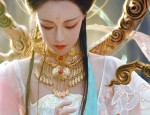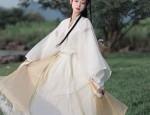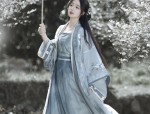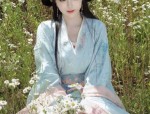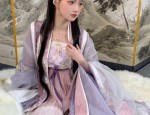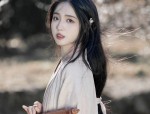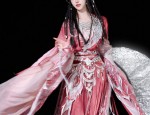Modern Renaissance of Traditional Tang-Style Hanfu for Women:The Evolution of a Classic Look
In the realm of traditional Chinese attire, the Hanfu has always been a symbol of cultural richness and historical significance. Among the various styles of Hanfu, the Tang-style version, with its distinctive features and designs, has always garnered a special place in the hearts of many. As time marches on, modern fashion trends have collided with traditional aesthetics, resulting in innovative yet respectful revivals of this ancient attire. This article delves into the evolution of the Tang-style Hanfu for women—a blend of traditional elegance with contemporary improvements.

The Tang era, spanning from 618 to 907 AD, was a time of prosperity and cultural exchange in China. The clothing of this era reflected a fusion of various influences, including luxurious fabrics, vibrant colors, and intricate designs. The Tang-style Hanfu, in particular, featured a loose-fitting silhouette with a graceful flow, often adorned with exquisite embroidery and beaded embellishments. This traditional attire was not just about fashion but also a reflection of cultural values and societal norms.
As we move into the modern era, the desire to preserve and revive traditional culture is on the rise. This has led to a renaissance of sorts for the Tang-style Hanfu. However, this revival is not just a mere replication of the past. Instead, it is an innovative blend of traditional elements with contemporary designs and aesthetics. This is especially true for women's Tang-style Hanfu.
The modern version of the Tang-style Hanfu for women retains the essence of its traditional counterpart—the graceful flow, luxurious fabrics, vibrant colors, and intricate designs. However, it also incorporates contemporary elements to make it more wearable and suitable for modern lifestyles. For instance, modern designers have experimented with different cuts and styles to create a more tailored fit that accentuates the female figure. They have also used modern materials like stretchable fabrics and lightweight materials to ensure comfort and ease of movement.
Another notable aspect of the modern Tang-style Hanfu is its fusion with other cultural elements. Modern designers often incorporate elements from other cultures into their designs, resulting in a truly global fusion of styles. This fusion not only adds a contemporary touch but also enhances the versatility of the Hanfu, making it suitable for different occasions and events.
The revival of the Tang-style Hanfu is not just about fashion; it is also about preserving and honoring a rich cultural heritage. By wearing these modernized versions of traditional Hanfu, women are not just showcasing their fashion sense but also paying homage to their cultural roots. These modern Hanfu are not just a piece of clothing; they are a symbol of cultural continuity and pride.
In conclusion, the modern evolution of the Tang-style Hanfu for women is a testament to the resilience and adaptability of traditional culture. By blending traditional elements with contemporary designs and aesthetics, modern designers have created a truly modern yet culturally significant piece of clothing that women can wear with pride. This is not just a fashion trend; it is a cultural movement that celebrates the rich heritage of traditional Chinese culture.
As we move forward in time, let us hope that this blend of traditional and modern continues to evolve and reach new heights, preserving the essence of our rich cultural heritage while incorporating contemporary elements that make it more relevant and accessible to the younger generation. In this way, we can ensure that our cultural heritage lives on through future generations, just as the Tang-style Hanfu does today.

 Previous Post
Previous Post

